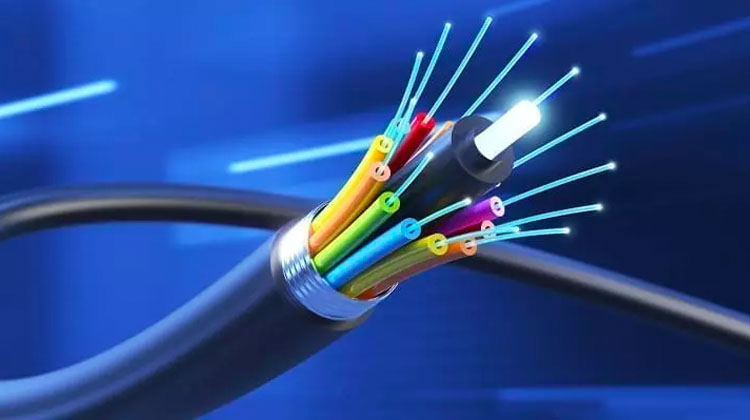In a landmark move poised to reshape the country’s digital infrastructure, the Federal Executive Council of Nigeria has green‑lit an expansive plan for deploying 90,000 km of fibre-optic cable nationwide. This bold initiative, initiated by the Ministry of Communications, Innovation & Digital Economy, aims to bridge the digital divide by delivering reliable, high‑speed internet to homes, schools, hospitals, and businesses across all 36 states plus the Federal Capital Territory.
Table of Contents

Strategic Approval Following High‑Level Engagement
The decision follows a high‑level meeting between President Bola Ahmed Tinubu, Minister Wale Edun, and Dr. Bosun Tijani—the Minister of Communications, Innovation & Digital Economy. The announcement coincided with a visit by Anshula Kant, Managing Director and CFO of the World Bank, underscoring the project’s international backing.
Dr. Tijani described the fibre network as “future‑facing,” intended to:
- Offer ring architecture spanning geopolitical zones and states, ensuring equitable digital access even in remote locations
- Guarantee fibre‑based connectivity not only for public institutions but also for residences and businesses.
Financing Through a Sustainable Public‑Private Mix
Diverging from traditional public‑funded models, this project will be executed through a Special Purpose Vehicle (SPV). The structure features:
- A 51% equity stake from private sector investors
- 49% held by government and development finance partners
- Financial backing from the World Bank, African Development Bank (AfDB), Islamic Development Bank, among others.
- Estimated project cost: $2 billion, supported by a mix of sovereign loans, DFI funding, and private equity.
World Bank representative Anshula Kant emphasised Nigeria as “a very valuable partner,” highlighting that this fibre project is central to the Bank’s strategy to bolster digital services as a catalyst for economic growth.
Finance Minister Wale Edun reaffirmed that the initiative is “self‑financing,” with end‑users paying for services, ensuring long‑term viability.
Technical Blueprint and Roll‑Out Plan
The project’s key milestones include:
- Network design completion, to be made public within 4–8 weeks.
- Construction to begin before year‑end 2025, with initial groundwork slated immediately after final approvals
- Cabling rings across all geopolitical zones, connecting every state
- Last‑mile links extending access to households and public institutions
Economic and Social Ramifications
Independent studies have revealed a powerful correlation between improved broadband and economic growth:
- A 10% rise in broadband quality correlates with a 1.35% increase in GDP.
- The SPV model enables Nigeria to avoid unsustainable debt while capturing long‑term returns.
Broader benefits include:
- Surging internet penetration, from ~50% to an estimated 70%+
- Estimated cost savings of over 60% on connectivity
- Connecting 200,000+ schools, hospitals, and social hubs
- Boost to smart industries — including precision agriculture, remote learning, telemedicine, e‑governance, and creative industries.
Job Creation & Capacity Building: Project Bridge Initiative
Tied to the fibre roll‑out is the “Project BRIDGE” framework, which includes:
- Establishment of the SPV to manage the network
- First phase deployment of 30,000 km in year one; full network to be deployed over five years.
- $845 million in secured funding from DFIs and development partners.
- Creation of around 20,000 direct jobs and 150,000 indirect roles
- Training of 5,000 youth through the Digital Bridge Institute
- Stimulating local fibre‑cable manufacturing and export to West Africa.

Global Comparisons and Continental Implications
When complete, Nigeria’s 125,000 km fibre backbone—combining existing and new cable—will rank third in Africa, following Egypt and South Africa.
Leveraging existing submarine cable access (eight landing points) and terrestrial expansion, Nigeria is positioned to enhance data usage from the current 10%—facilitating deeper integration into regional and global digital systems.
Ministerial Vision & Broader Policy Context
Dr. Bosun Tijani outlined the government’s strategy:
- Align digital infrastructure deployment with tangible socio‑economic outcomes
- Fully leverage submarine to last‑mile fibre connectivity
- Support smart agriculture, digitised healthcare, and education
- Embed Nigeria into the emerging creative and innovation economy
AimeProductsNews detailed how rings and full coverage were core to the architecture, driven by a PPP strategy to ensure financial sustainability
Critical Success Factors and Challenges Ahead
Despite strong planning, several challenges must be addressed:
- Implementation execution—timely roll‑out and adherence to timelines
- Equitable access—preventing rural/urban disparities
- Private sector appetite—ensuring SPV credibility and returns
- Regulatory support—streamlined permits and shared infrastructure access
Success will depend on coordination across the government, DFIs, private operators, and local communities.
The Bigger Picture
This project is Nigeria’s boldest digital infrastructure commitment to date, marking a shift from patchwork broadband to an integrated, national backbone system.
By enabling fibre in every state and community, the project promises to unlock:
- Source A: transformative impact on agriculture, connectivity, creative industry, and human capital
- Economic dividends: estimated 1.35% GDP boost per 10% broadband improvement, aligning with infrastructure reform
- Societal inclusion: millions gaining access to education, healthcare, and public services

Roadmap to Impact
- Design details shared publicly mid‑2025
- SPV established by Q3 2025
- Groundbreaking before the close of 2025
- National roll‑out continuing through 2026–30, with milestone targets for fibre completion
- Skills training and manufacturing initiatives rolled out in tandem
Conclusion
Nigeria’s 90,000 km fibre network expansion marks a pivotal moment in its quest for digital sovereignty. Anchored in sustainable finance, broad stakeholder collaboration, and integrated infrastructure planning, the initiative holds promise to redefine education, business, agriculture, healthcare, and governance across Nigeria.
By uniting vision, funding, and technical know‑how, the government is not just building cables—it’s building bridges to inclusive digital futures, economic growth, and continental competitiveness.
Join Our Social Media Channels:
WhatsApp: NaijaEyes
Facebook: NaijaEyes
Twitter: NaijaEyes
Instagram: NaijaEyes
TikTok: NaijaEyes








































